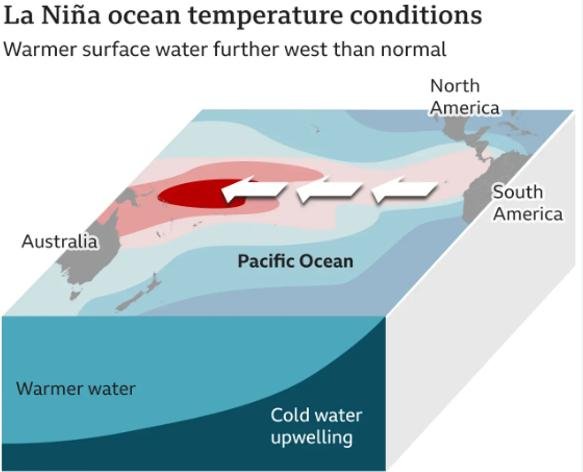El Niño or La Niña? Murky pattern of temperature keeps confusion alive
(Source – The Hindu, International Edition – Page No. – 7)
|
Topic: GS1 – Geography |
|
Context |
|


Unexpected Sea Surface Temperature (SST) Patterns
-
SST patterns in the tropical Pacific Ocean since early 2024 have evolved in an unusual way.
-
Historically, El Niño has been linked to monsoon deficits, while La Niña is associated with above-average rainfall.
-
SST patterns in the tropical Pacific Ocean since early 2024 have evolved in an unusual way.
-
Initial forecasts predicted a strong La Niña for late 2024, but SST anomalies shifted unexpectedly.
-
Instead of cooling in the far eastern Pacific, warm SST anomalies appeared there, while cold SST anomalies moved westward.
The Role of Climate Variability in ENSO Transition
-
The ENSO Transition Mode (ETM), a natural climate variability factor, likely influenced this shift.
-
ETM may have prevented La Niña from emerging in 2024, despite earlier predictions.
Uncertain Climate Predictions for 2025
-
Climate forecasts for summer and fall of 2025 remain mixed.
-
Some models suggest a La Niña will form, others predict a neutral year, and one even forecasts a strong El Niño.
-
The 2023 monsoon remained normal despite a strong El Niño, partly due to the Indian Ocean Dipole (IOD).
Challenges in Forecasting and Climate Change Impact
-
The relationship between ENSO and the Indian monsoon has changed over recent decades.
-
Climate models struggle to predict future patterns due to record-high global temperatures.
-
Mid-latitude climate changes, jet stream shifts, and pre-monsoon cyclones are further impacting the monsoon’s timing and intensity.
Implications for India
-
Farmers remain uncertain about their crop yields, making monsoon forecasts crucial.
-
The State and Union governments depend on accurate predictions to plan for possible droughts or floods.
-
Climate scientists and the India Meteorological Department continue efforts to improve forecast reliability.
-
Early heat waves in 2025 add further concerns about extreme weather patterns.
|
PYQ: What characteristics can be assigned to a monsoon climate that succeeds in feeding more than 50 percent of the won population residing in Monsoon Asia?(250 words/15m) (UPSC CSE (M) GS-1 2017) |
|
Practice Question: How do shifting sea surface temperature anomalies in the Pacific influence the Indian monsoon and its seasonal variability? (150 Words /10 marks) |
